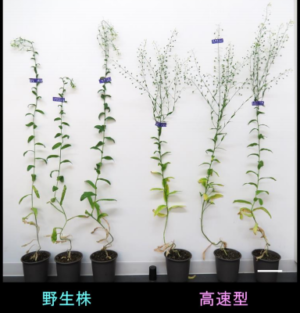2020/4/16 コーネル大学

・ コーネル大学が、海洋での使用に耐える強度を備えながら、紫外線で劣化・分解する新しいポリマーを開発。
・ 同プラスチックは、商用の釣り道具で必要とされる機械強度を有し、現実的なタイムスケールで分解。環境中に蓄積して残るプラスチック量の低減が期待できる。
・ 海洋に流れ着くプラスチック廃棄物の約半分は、漁網やロープ等の商業漁業道具。それらは主にアイソタクチックポリプロピレン、高密度ポリエチレン、ナイロン-6,6 の 3 種類のポリマーより構成されるが、いずれも分解しない。近年では生分解性ポリマーにより多くの関心が寄せられているが、商用プラスチックに匹敵する機械強度を備えた材料の開発が困難となっている。
・ 同大学では、過去 15 年間にわたりアイソタクチックポリプレンオキシド(iPPO)と呼ばれるポリマーを開発している。同材料の機械強度と光分解能力は、1949 年の同材料の発見以来、今回まで知られていなかった。その高度なイソタクチシティー(ポリマーの立体規則性の一種)とポリマー鎖長が、同材料に特異性と機械強度を付与する。
・ iPPO は、使用中は安定し、紫外線に曝されると分解する。この iPPO 組成の変化は研究室では明らかだが、見た目には良くわからない。劣化の速度は光の強さで決まるが、研究室の条件下では、30日間の紫外線照射後にポリマー鎖が元の長さの 1./4 に減少した。
・ 最終的には、同ポリマーの環境残存量ゼロを目指す。効果的に消滅する iPPO のスモール鎖の生分解の先例に関する文献が存在するが、当面はこのことの検証に努める。
・ 本研究には、米国科学財団(NSF)の Center for Sustainble Polymers、NSF が支援する NMR Facility(コーネル大学)および Cornell Center for Materials Research が資金を提供した。
URL: https://news.cornell.edu/stories/2020/04/chemists-create-faster-degrading-plasticmarine-uses
<NEDO海外技術情報より>
(関連情報)
Journal of the American Chemical Society(JACS)掲載論文(アブストラクトのみ:全文は有料)
Isotactic Poly(propylene oxide): A Photodegradable Polymer with Strain Hardening Properties
URL: https://pubs.acs.org/doi/10.1021/jacs.0c01768
Abstract
Leakage and accumulation of highly stable commercial plastics has led to substantial contamination of the environment. Highly isotactic poly(propylene oxide) (iPPO) was investigated as a potential high-strength thermoplastic with greater susceptibility toward degradation under ambient conditions. Various stereoregular forms of iPPO including enantiopure, enantioenriched, racemic, and stereoblock were synthesized with a single catalyst architecture in the presence of chain transfer agents. These materials were found to possess the same approximate ultimate tensile strength (UTS) via uniaxial tensile elongation analysis (∼75 MPa). A serrated tensile response corresponding to stress oscillations was observed in all forms of iPPO. An investigation on strain rate dependence showed that an increase in strain rate results in the decay and disappearance of the serrated response. Further evaluation of iPPO revealed its dramatic strain hardening afforded an UTS comparable to that of nylon-6,6. Exposing iPPO to UVA light (365 nm) resulted in photolytic degradation. Following 30 days of continuous exposure at 250 μW cm–2, the Mn decreased from 93 kDa to 21 kDa, while samples not exposed to UVA light remained unchanged. Through selective stabilization with antioxidant additives, we believe iPPO could be a suitable replacement for nylon-6,6 in environmentally susceptible applications.


_no%20white%20border_30f0231a84.jpg)
